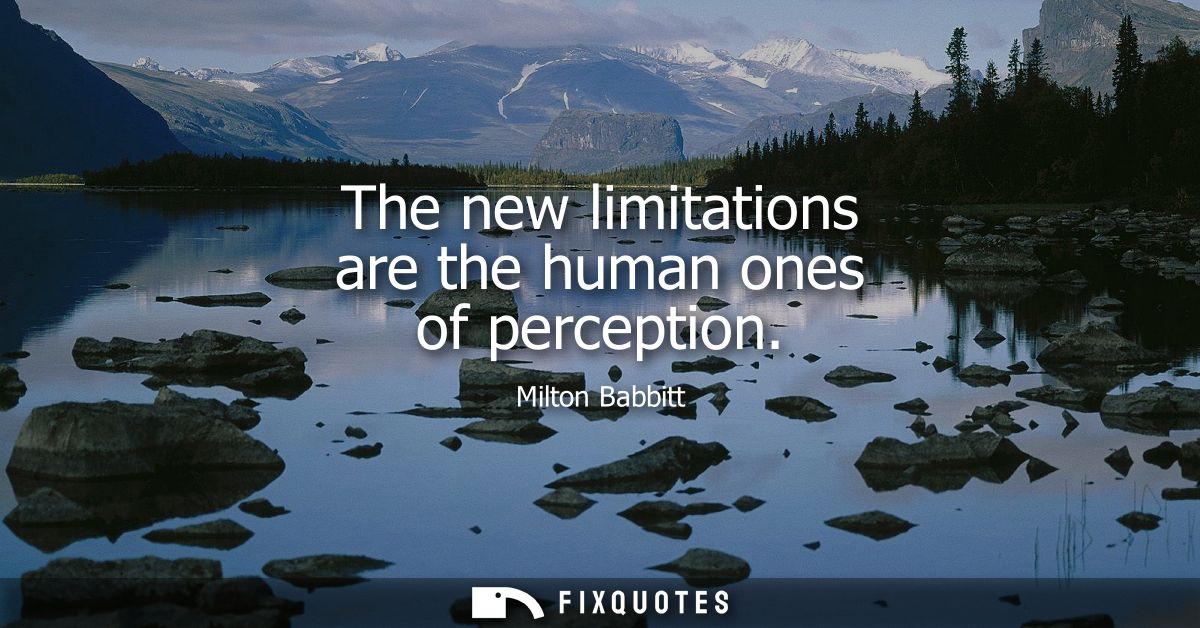"The new limitations are the human ones of perception"
About this Quote
Babbitt points to a shift: as technology and technique remove old barriers in art and music, the stubborn constraints that remain are the ones built into human perception and cognition. Instruments, notation, recording, and synthesis opened vast parameter spaces, microtime, microtonality, intricate timbral morphologies, combinatorial structures, yet the ear and mind must still organize sound into patterns, foregrounds, and memories. If a structure cannot be perceptually parsed, it risks becoming indistinguishable from noise, not because it lacks order, but because its order is unavailable to human listeners in real time.
This insight reframes composition as an exercise in perceptual engineering. Gestalt grouping, auditory masking, timbral contrast, registral spacing, rhythmic stratification, and repetition become tools for making complexity legible. A composer can craft pathways that cue attention, sequence revelations over time, or distribute information across layers so that listeners can build a durable mental model. Conversely, one can deliberately push against these limits to produce textures of ambiguity, exploring thresholds of simultaneity, density, and speed where perception flickers.
The remark also carries a social provocation. If perception is the limit, should artists reduce complexity to fit prevailing capacities, or cultivate new forms of listening that extend those capacities? Babbitt often argued for specialist audiences and pedagogy, suggesting that education and repeated exposure can expand what is hearable, much as training sharpens discrimination in wine tasting or microscopy. The limitation, then, is not immutable; it is a frontier for learning.
Beyond music, the idea extends to design, data visualization, and AI. Unlimited computation yields diminishing returns if outputs exceed what humans can interpret or trust. The challenge becomes aligning abundance with salience: compressing, sequencing, and surfacing information in ways that respect attention, memory, and bias.
Ultimately, the statement is both warning and opportunity. Art’s future will be determined less by what can be generated and more by what can be perceived, shared, and remembered, and by how deftly creators translate boundless possibility into humanly graspable experience.
More details
About the Author

